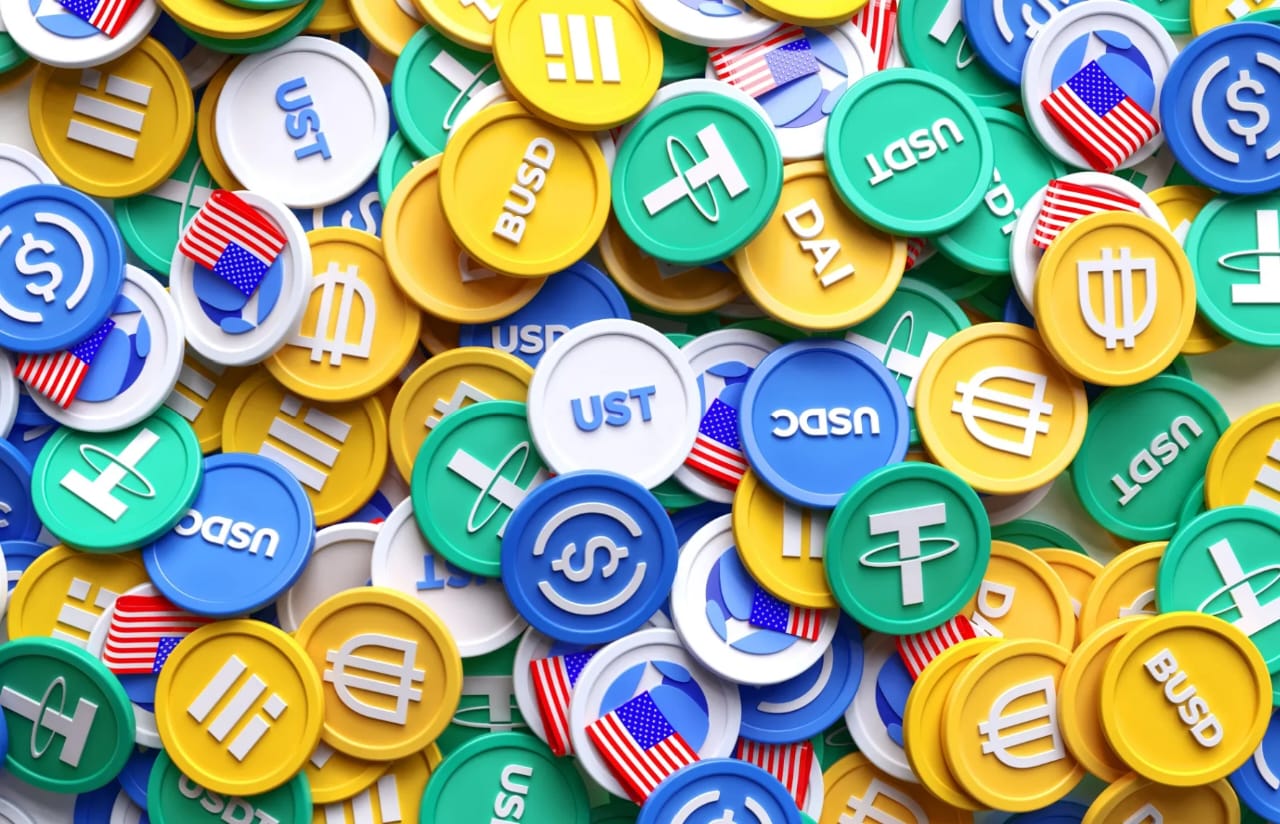In the ever-shifting world of digital currency, one type of crypto asset is quietly defying market volatility. Known as Stablecoins, these tokens are engineered to maintain a fixed value over time. While traditional cryptocurrencies often experience dramatic price swings, Stablecoins remain consistent, making them an increasingly vital component of blockchain-based finance.
The key to their stability lies in their backing. Most Stablecoins are pegged to reserve assets such as fiat currencies, gold, or even other cryptocurrencies. For example, Tether (USDT) is tied to the US dollar at a 1:1 ratio, meaning that each USDT in circulation is supposed to be backed by $1 in reserves held by its issuer. This backing ensures that users can rely on its value regardless of market conditions.
Although they function like other digital assets in terms of transferability and blockchain compatibility, Stablecoins offer a critical difference: price predictability. More than 200 types of Stablecoins are currently in circulation, reflecting the growing demand for stable digital value in a decentralized financial ecosystem.
Inside the Mechanisms That Keep Stablecoins Stable
There is no one-size-fits-all approach when it comes to maintaining the value of a Stablecoin. In fact, the crypto ecosystem has developed four distinct models, each based on what backs the asset.
Some, like fiat-collateralized Stablecoins, rely on traditional currencies such as the US dollar, held in reserve by centralized institutions. Their supply and credibility often depend on third-party audits to confirm the existence and adequacy of the backing.
Others are tied to commodities. Tether Gold and Pax Gold, for instance, are backed by physical gold, allowing users to redeem their tokens for real-world assets. Unlike fiat-backed coins, these offer exposure to commodities while staying within the crypto ecosystem.
Then there are crypto-collateralized Stablecoins, like DAI, which maintain value through an overcollateralization mechanism. To issue 1 DAI, users must lock up cryptocurrency worth more than the coin itself—typically 150% of its value. These models operate under decentralized governance, with no single entity in control.
Finally, algorithmic Stablecoins use self-regulating smart contracts to adjust supply in real-time. If demand drops and price falls, the system reduces token supply to create scarcity. But this model is risky. In May 2022, TerraUSD (UST) lost more than 60% of its value when its underlying crypto asset, LUNA, crashed by over 80%.
A Digital Currency with Real-World Utility
The appeal of Stablecoins extends far beyond their price stability. Their design makes them an essential part of the growing decentralized finance (DeFi) ecosystem, where they are used for lending, borrowing, and trading without relying on banks or intermediaries.
In lending platforms like Aave, users can deposit Stablecoins such as USDT, USDC, and DAI and earn variable interest—sometimes reaching up to 20%. On the borrower’s side, Stablecoins can serve as collateral to obtain loans in other cryptocurrencies, enabling access to capital while avoiding volatile assets.
Stablecoins also power liquidity provision in decentralized exchanges. Users who supply these coins to liquidity pools, such as on Uniswap, earn a share of trading fees when others transact using those assets.
Their efficiency has made them a popular tool for traders. Many exchanges waive conversion fees between Stablecoins and other digital assets, making them ideal for holding funds between trades or executing limit orders without unnecessary costs.
Cross-border transfers are also faster and more cost-effective when using Stablecoins. Without banks or traditional clearing systems, users can move value across countries in minutes. And because these transactions occur on public blockchains, they are fully transparent and traceable—a contrast to traditional financial systems.
Behind the Promise Lies Structural Risk
Despite their growing popularity, Stablecoins are not without flaws. A key criticism is their lack of decentralization. While crypto is rooted in decentralized principles, many Stablecoins are issued by centralized entities that control reserves and governance, raising questions about oversight and power concentration.
Transparency is another issue. In some cases, users and regulators have challenged whether certain coins are truly backed as claimed. Tether, for instance, faced legal scrutiny over whether it held sufficient dollar reserves to match its issued tokens.
Moreover, regulatory clarity remains elusive. Although several central banks are exploring the potential of Stablecoins for developing their own central bank digital currencies (CBDCs), regulators continue to express concern over the security, reserve management, and systemic risk posed by these digital assets.
Indonesia’s Bet on Stablecoins with IDRX
Amid the global rise of Stablecoins, Indonesia is charting its own path. The crypto startup IDRX, launched in early 2024, is developing a Rupiah-backed Stablecoin and recently secured Rp4.8 billion in early-stage funding. Investors include eMerge by MDI Ventures, Indodax, and international blockchain firms like Lisk.
Since launch, IDRX has facilitated over Rp1.4 trillion in transactions, signaling strong interest from the local crypto community. Its goal is not just to issue a stable digital Rupiah, but to build a trusted national crypto infrastructure aligned with Indonesia’s economic sovereignty.
"We’re not just building technology," said Nathanel Christian, CEO and Co-Founder of IDRX. "We’re driving broader adoption of the Rupiah in the digital economy."
IDRX plans to integrate minting and redemption services, allowing seamless conversion between fiat Rupiah and its digital counterpart. With regulatory compliance and strong governance as core priorities, IDRX aims to bridge Indonesia’s financial system with blockchain while preparing for broader institutional and governmental adoption.
PHOTO: SHUTTERSTOCK/DDRENDER
This article was created with AI assistance.
Read More






 Friday, 21-11-25
Friday, 21-11-25







